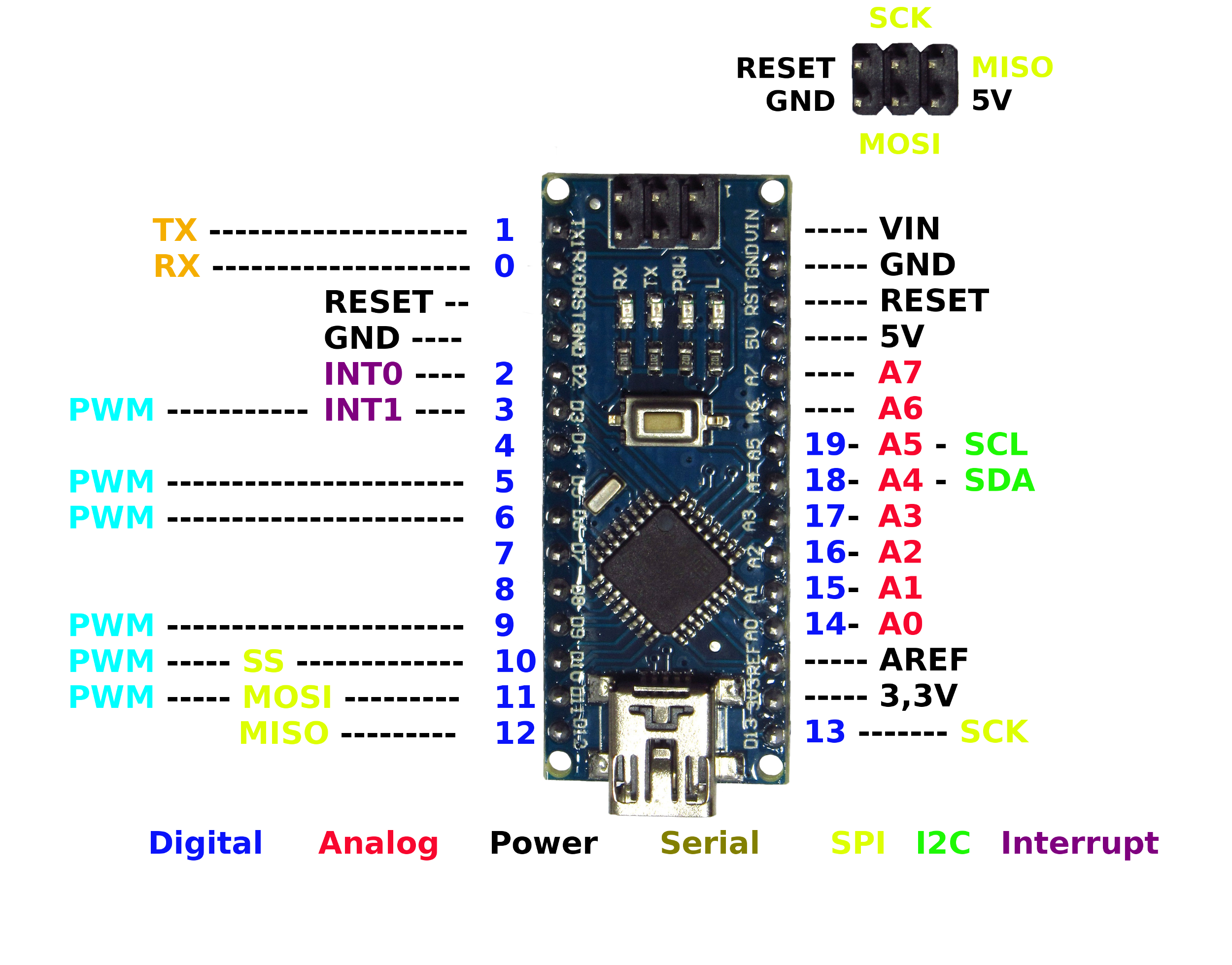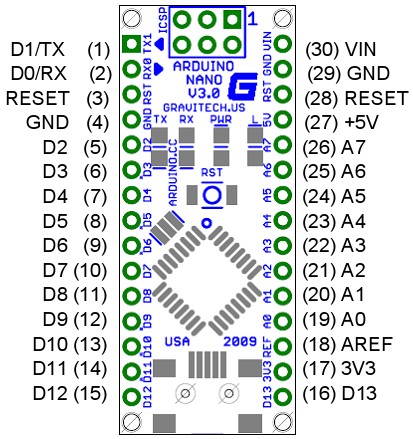
- #Arduino nano pinout 3v install#
- #Arduino nano pinout 3v serial#
- #Arduino nano pinout 3v pro#
- #Arduino nano pinout 3v software#
However, for further queries, communicate with us.

We hope that we have explicitly covered the two modules. The above boards are useful for advanced users and simple DIY projects.
#Arduino nano pinout 3v pro#
But, for less advanced projects, you can settle for the pro mini. Moreover, the NANO has superior RAM to the Micro version. However, the Nano is better for applications requiring fitting in a solderless breadboard since it’s small and has other additional features. A small, efficient, complete, and breadboard-friendly, based on the ATmega328P, Arduino Nano is just the board you need to create tons of interesting and impressive products.

#Arduino nano pinout 3v software#
Has a USB support (Micro-USB Connector), and FTDI forms the USB connectionīoth boards run on Arduino software and thus can perform in equal measure. Arduino Nano board An Atmega328 based microcontroller. Operating Voltage- 7V to 9VInput Voltage- 5VĪnalog Input pins count – 6 No analog output PinsĪnalog Input count- 8 No analog output pins What are the Differences between Arduino Pro Mini vs Nano?įig 2: Both boards are useful in DIY projects FeaturesĪTMega328P and ATMega168P microcontroller The ABRANano is ABRAs very own Arduino Nano V3.0 Compatible ATmega328P with the FT232 chip (not the Chinese CH340). It provides a reference voltage to the board

It switches the LED ON and OFF depending on the board’s condition. These are essential in initiating an interrupt
#Arduino nano pinout 3v serial#
They are useful in receiving and transmission of the board’s TTL serial data. They maintain the board’s analog input voltage between 0V and 5V. It is useful in resetting the microcontroller. Vin is the input voltage pin connecting to an external power source of 7V to 12V. Next, we have the 5V for supplying a regulated power supply voltage. Also, there’s the 3.3V pin that receives minimum voltage from the voltage regulator. Lastly, GND is the board’s, Ground Pin. Lastly, there’s a RESET pin for setting the microcontroller.Moreover, we have the Data Terminal Ready (DTR) pin for resetting the board and inputting the bootloader for the Arduino pro mini programming.In addition, there’s Pin I2C which enables I2C communication.The LED goes on when the pin is high and off when the pin is low. Further, we have Pin 13, which features a built-in LED.These are imperative in supporting SPI communication. Also, there is Pin 10 (Slave Select), Pin 11 (Master Output/ Slave Input), Pin 12 (Master Input/ Slave Output), and Pin 13 (Serial Clock).You use these pins with the analogWrite function to give an 8-bit PWM output. Triggering these pins prompts an interrupt. Next, we have Pin 2 and 3 that function as external interrupts. Each of the 14 digital pins on the Nano can be used as an input or output, using pinMode(), digitalWrite(), and digitalRead() functions.Pin 0 and Pin 1 are UART pins/ serial pins for serial communication or receiving and transmitting TTL serial data, respectively.The microcontroller features 14 digital input/output pins whose functions are as follows: nanoįig 1: A car robot toy made using an Arduino board Arduino Pro Mini Pinout We’ll explore the features of these two at length. Instead, Arduino Pro Mini vs Nano is a handy alternative. Often, many people opt for the Arduino Uno, but where fitting in a small size is necessary, this version is not feasible. Nano is completely garbage.The Arduino board is one of the most popular microcontrollers due to its versatility. Moreover, each pin can provide or receive a current of 40 mA maximum and operate at 5V voltage as maximum.

Arduino Nanohas 14 digital pins and each of them can be used both ways: as input and output. In some cases, while the ch340 IC breaks down, unfortunately it takes the Atmega328p IC with it, so it’s a festival. Discover the Best Starter Kits with Breadboard.
#Arduino nano pinout 3v install#
So what happens when you want to use the 3.3v pin of the clone nano? The CH340 IC is broken and when you try to install you get an error like this: avrdude: stk500_recv(): programmer is not respondingĪs a result, don’t use the 3.3v pin if you don’t want your clone nano’s ch340 chip to break. If you are going to work with 5V, connect a capacitor, if you are going to work with 3.3v, connect it to VCC, it says in the datasheet. A pin that specifies at what voltage level the IC will operate. You ask why? Looking at the CH340’s datasheet (picture 3), the V3 pin is not an output pin, but a comparison or reference pin. It’s a cunning to escape the material and see 3.3v when measured with a multimeter. So where did they connect the 3.3v pin of the Nano? When you examine the circuit diagram of the 2 numbers clone nano, you will see that this pin is connected to the V3 pin of the CH340 usb serial IC. The place I marked with 1 in the picture is Ams1117 5.0 ie 5V regulator. You ask why? Because there is no 3.3v regulator on the Clone Arduino Nano. DO NOT USE THE 3.3V PIN WHEN USING CLONE NANO!


 0 kommentar(er)
0 kommentar(er)
